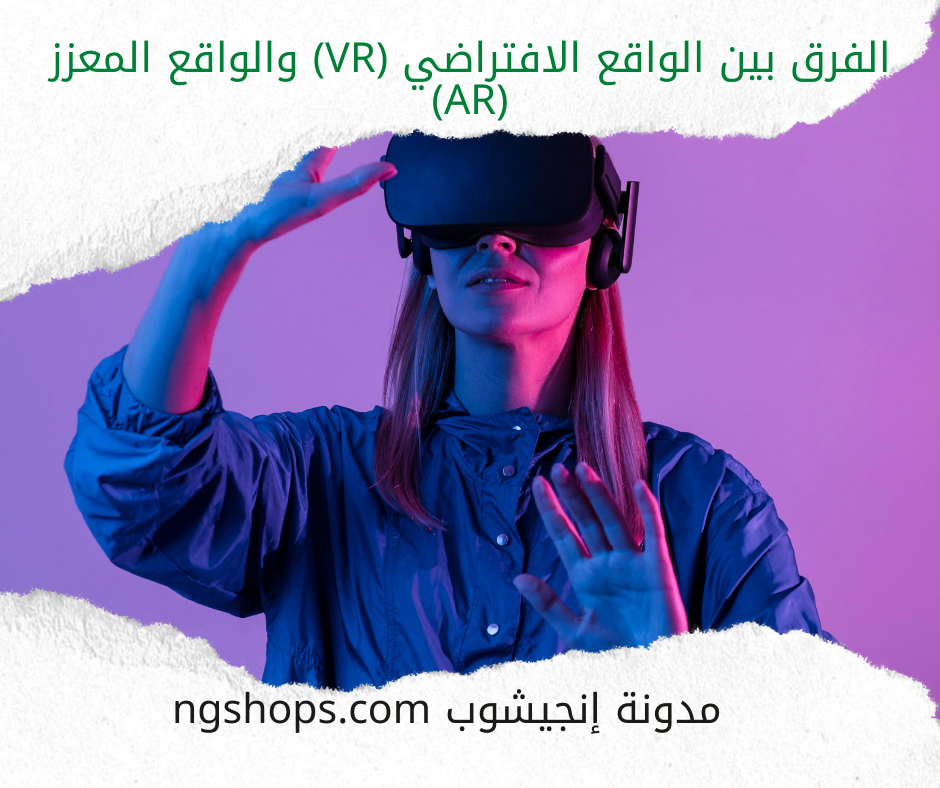What is the difference between virtual reality (VR) and augmented reality (AR)? Augmented reality and virtual reality technologies are based on creating and creating a new scene and shape in a physical form that can actually be touched, such as creating a sound effect or an artificial audio effect, so we will talk in the following lines about the difference between virtual reality (VR) and augmented reality (AR).
Read also: How to design attractive marketing advertisements?
The difference between virtual reality (VR) and augmented reality (AR)
In the following lines, we will talk and explain the difference between virtual reality and augmented reality in detail:
What is augmented reality?
- Augmented reality is the enhancement of one's experience with the real world by using computer interfaces in augmented reality.
- The subject will interact directly or indirectly with the real world while the simulated computer features are blended with the real world.
- A simple example could be a sports match shown on television. Apart from the real match.
- Additional information such as scores and statistics are included as supplemental components.
- Technology today has become so much more advanced that it is now possible to mix supplemental ingredients quite seamlessly with the real world.
Augmented reality components
- To tenFWith augmented reality ,The hardware components required include input devices, ,sensors, processor and output devices.
- Through sensors such as accelerometer, GPS, pressure and magnetometer sensors.
- Supplementary information is collected about the real world, which the user cannot directly perceive through his senses.
- Input devices allow users to give commands to the system interactively.
- The processor processes the data by executing programs and uses output devices to give augmented reality to the user.
- The output device can be a simple device such as a display.
- But more advanced and modern devices like head-up displays, glasses, and virtual Retina displays blend enhanced components with the real world more seamlessly.
- Apart from vision-based outputs, it can also include auditory and olfactory outputs Augmented reality.
Read also: The future of e-commerce
What is virtual reality?
- Virtual reality is the immersion of the subject in a computer-generated world.
- Here the user can interact with the virtual world while being isolated from the real world.
- Since the user is disconnected from the real world, there is little need for sensors to collect information about the real world.
- However, input devices must be present to allow the user to interact with the virtual world. The wizard with the help of the software will create a virtual world based on the user's input.
- Then using advanced production hardware, the user is immersed in the virtual world.
- Here simple devices such as a screen will not be enough as the user will be able to see the difference between the real world and the virtual world as it is considered Virtual reality.
- It is preferable to use advanced devices such as virtual reality helmets and protective glasses.
- A device called the Oculus Rift, which is a head-mounted virtual reality display, is currently being developed and is expected to be released in 2015.
- Apart from sight, other senses such as taste, smell, sound and touch will be much preferred in order to provide a similar vivid experience.
What is the difference between augmented reality and virtual reality?
- In augmented reality, the user interacts with the real world, but in virtual reality, the user does not interact with the real world.
- It only interacts with the virtual world.
- In augmented reality, user experience are complementary components mixed with the real world.
- However, in virtual reality, the user is isolated from the real world and completely immersed in the virtual word.
- Virtual reality needs more advanced technology than augmented reality.
- To create a life-like feeling in a virtual world, virtual reality needs advanced technology.
- Augmented reality systems need sensors to collect data from the real world.
- However, in virtual reality, equipment systems are not used so much as the user is isolated from the real world.
- The cost of implementing augmented reality is lower than the cost of implementing virtual reality. Even the mobile phone has the resources to implement augmented reality, but to implement virtual reality, high-cost dedicated equipment is necessary.
- Currently, augmented reality products are available. Google Glass is a good example of an advanced augmented reality product.
- However, a virtual reality system that can completely immerse the user in a different world is not yet available.
- More processing power and graphics processing are necessary for virtual reality than for augmented reality.
- The algorithms and software for VR will be larger and more complex than what is used in AR.
Click to rate this post!
[Total: 0 Average: 0]

